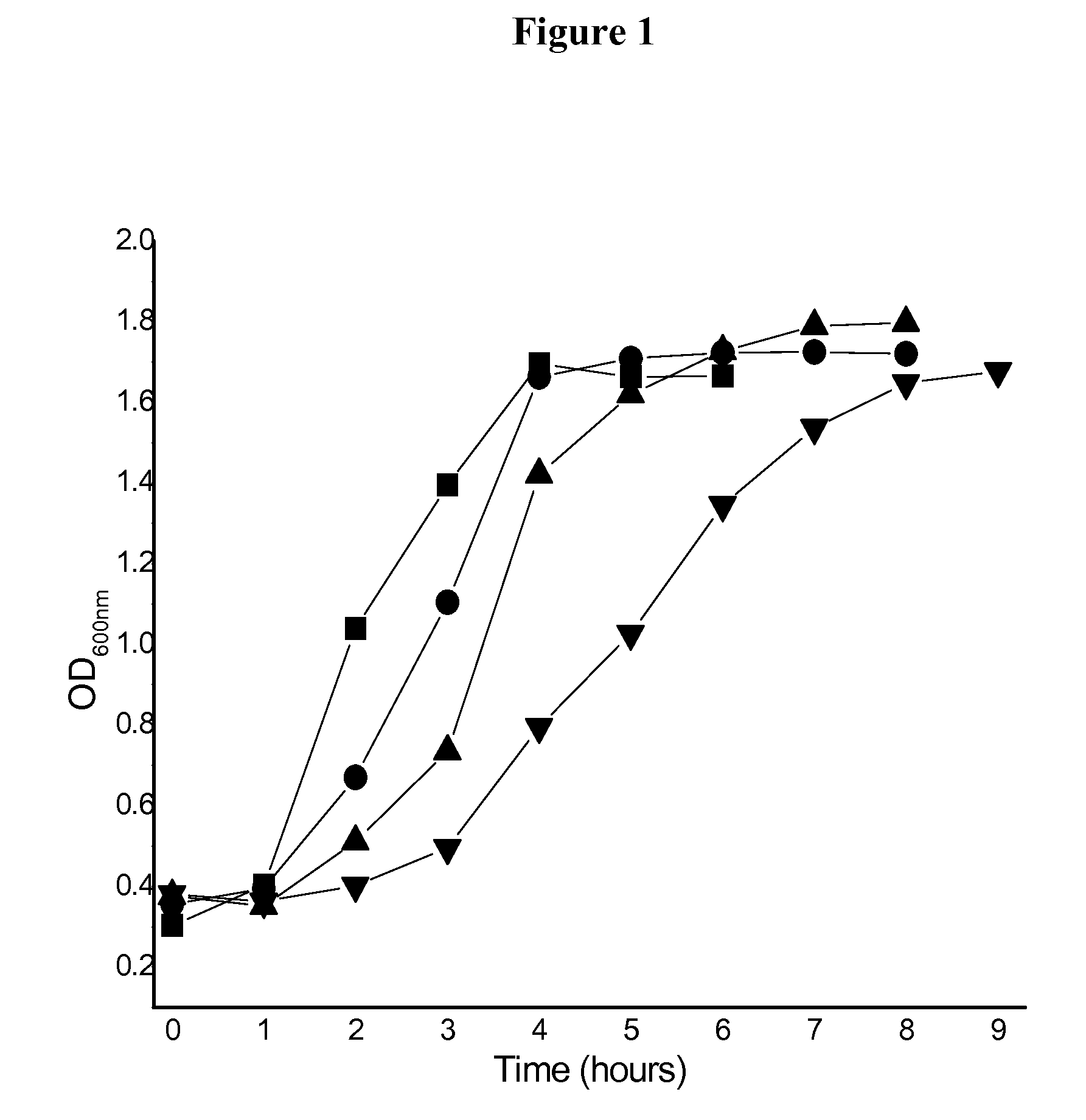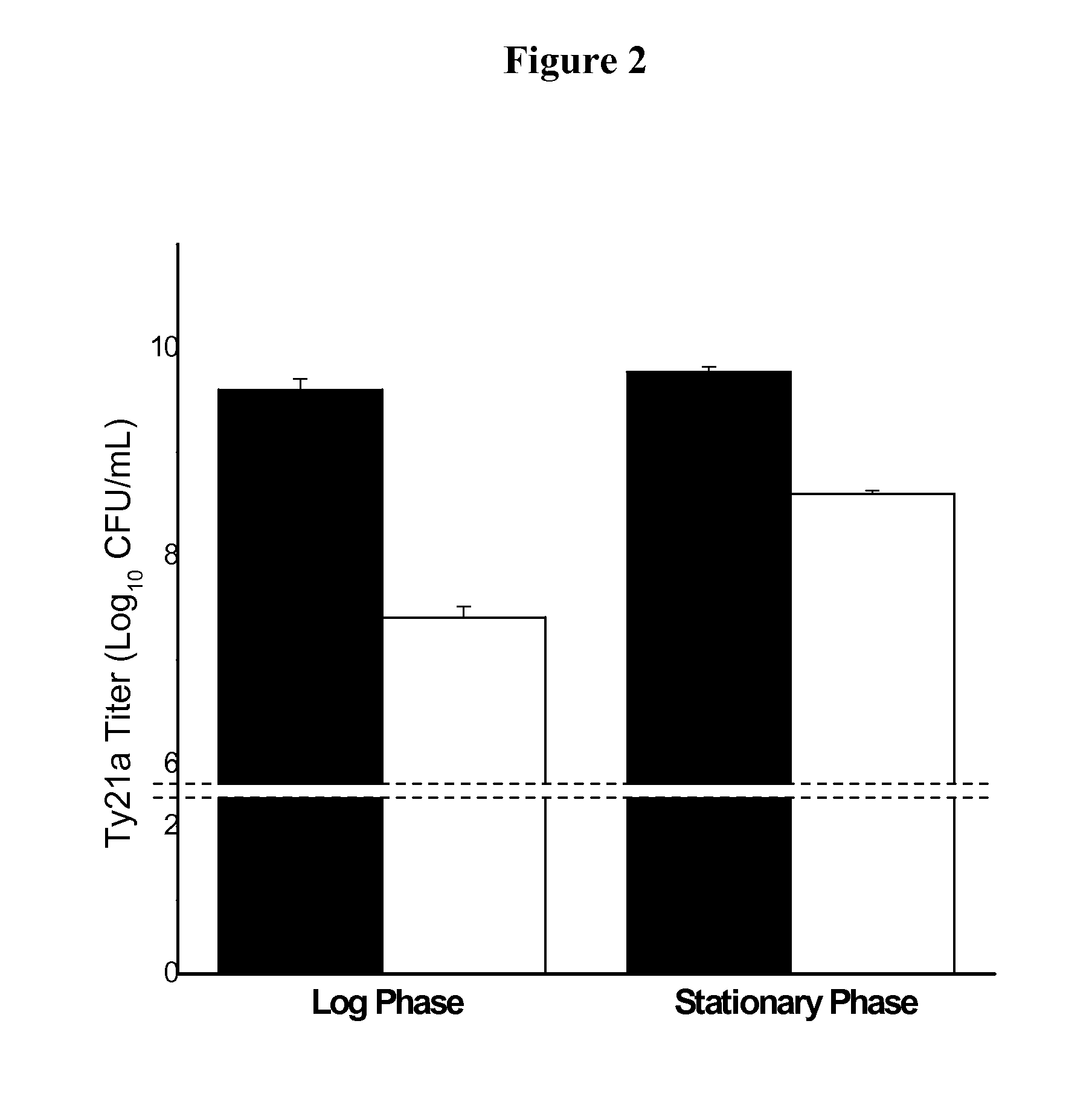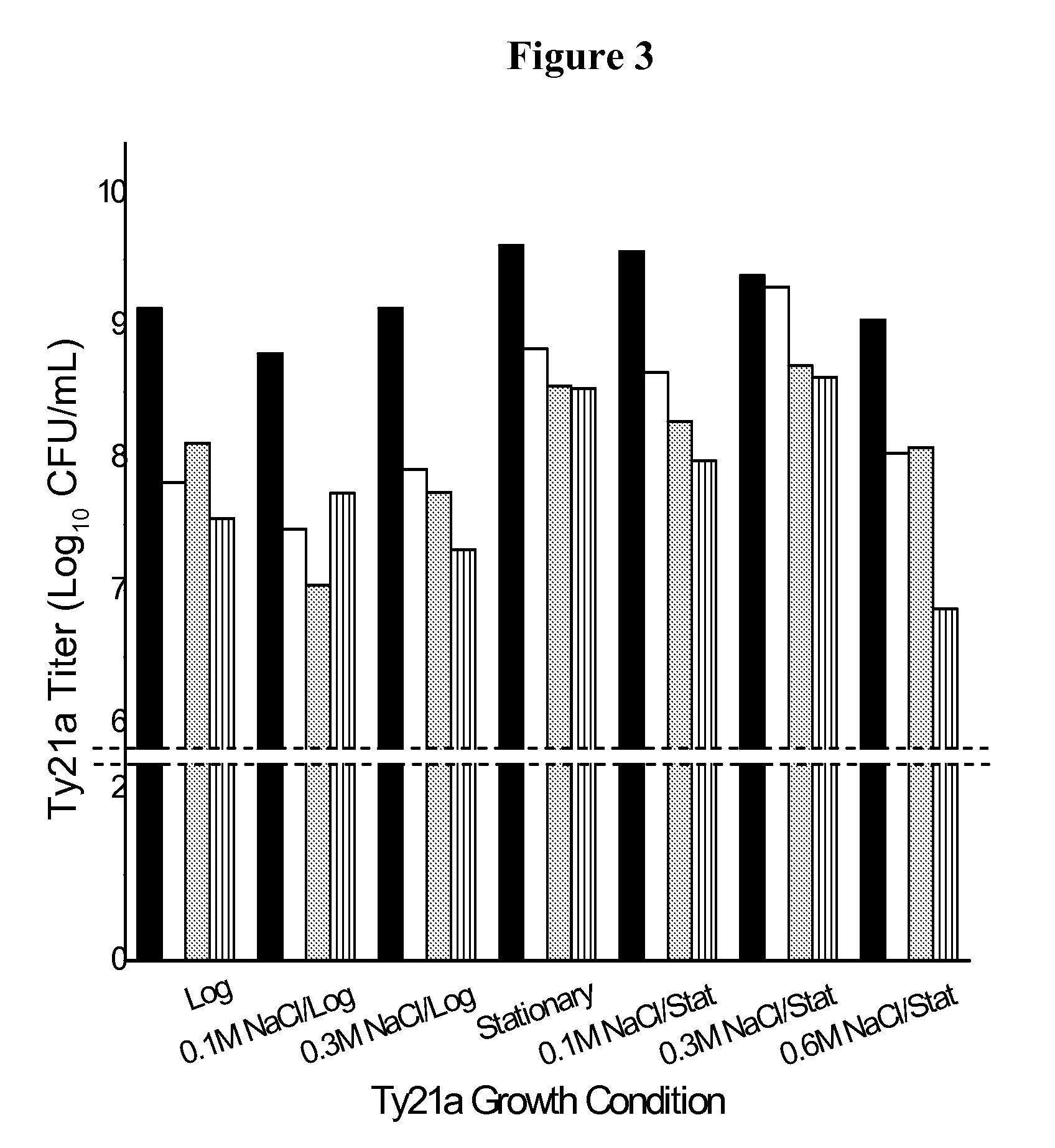Formulation for room temperature stabilization of a live attenuated bacterial vaccine
a technology of attenuated bacteria and formulation, which is applied in the direction of antibody medical ingredients, drug compositions, immunological disorders, etc., can solve the problems of slowing down the development of such vaccines, high sensitivity of attenuated bacteria, and difficulty in maintaining the viability of live bacterial vaccines during long-term storage. achieve the effect of reducing the ratio of surface/interior, facilitating the development of vaccines, and facilitating the storag
- Summary
- Abstract
- Description
- Claims
- Application Information
AI Technical Summary
Benefits of technology
Problems solved by technology
Method used
Image
Examples
example 1
Effect of Ty21a Growth Media on Growth Kinetics
[0149]Ty21a was cultured by inoculation in BHI broth and also in BHI broth containing 0.2, 0.3, or 0.4M NaCl. The bacterial suspension was shaken at 220 rpm while the temperature was maintained at 37° C. The kinetics of bacterial growth was monitored at OD600 nm (FIG. 1). The volume of the culture was about 50 mL, and the flask volume was about 500 mL. The term “early stationary phase” refers to a culture at the time immediately after the optical density (Abs600) has reached a plateau value, while the term “stationary phase” refers to a culture at later times.
example 2
Effect of Ty21a Growth Phase on Process Recovery
[0150]Live attenuated Salmonella enterica Serovar Typhi vaccine strain, Ty21a, was cultured by inoculation in brain heart infusion (BHI) broth overnight and was harvested in both log phase (1.6 OD600 nm) and early stationary phase (2.2 OD600 nm). The samples were centrifuged at 2500 rcf for 10 minutes, and the resulting bacterial pellet was resuspended in 1M trehalose and taken to the initial volume. 0.5 mL aliquot of the bacterial sample was placed into individual vials and dried according to cycle 1: 1) 15° C. at atmospheric pressure for 10 min, 2) 15° C. at or below 50 mTorr for 24 hours, and 3) 33° C. at or below 50 mTorr for 24 hours. The samples were reconstituted with double-filtered deionized water and plated out on (trypticase soy broth) TSB plates to determine viability (FIG. 2). The plates were counted after 16 hours of incubation at 37° C. In the above example, the pressure was decreased gradually, over the course of severa...
example 3
Effect of Ty21a Growth Media on Process Recovery
[0151]Ty21a was cultured by inoculation in BHI broth and also in BHI broth containing 0.1, 0.3, or 0.6M NaCl. Bacteria grown in each broth were harvested in both log phase (1.6 OD600 nm) and early stationary phase (2.2 OD600 nm). The samples were centrifuged at 2500 rcf for 10 minutes, and the resulting bacterial pellet was resuspended in 1M trehalose and taken to the initial volume. 0.5 mL aliquot of the bacterial sample was placed into individual vials and dried according to cycle 1. The vials were sealed under slight vacuum (˜650 Torr) in argon gas, crimped, and stored at 25° C. The vials were taken out at various time points and then reconstituted with double-filtered deionized water. The samples were plated out on TSB plates for viability determination (FIG. 3). The plates were counted after 16 hours of incubation at 37° C.
PUM
| Property | Measurement | Unit |
|---|---|---|
| pressure | aaaaa | aaaaa |
| pressure | aaaaa | aaaaa |
| pressure | aaaaa | aaaaa |
Abstract
Description
Claims
Application Information
 Login to View More
Login to View More - R&D
- Intellectual Property
- Life Sciences
- Materials
- Tech Scout
- Unparalleled Data Quality
- Higher Quality Content
- 60% Fewer Hallucinations
Browse by: Latest US Patents, China's latest patents, Technical Efficacy Thesaurus, Application Domain, Technology Topic, Popular Technical Reports.
© 2025 PatSnap. All rights reserved.Legal|Privacy policy|Modern Slavery Act Transparency Statement|Sitemap|About US| Contact US: help@patsnap.com



